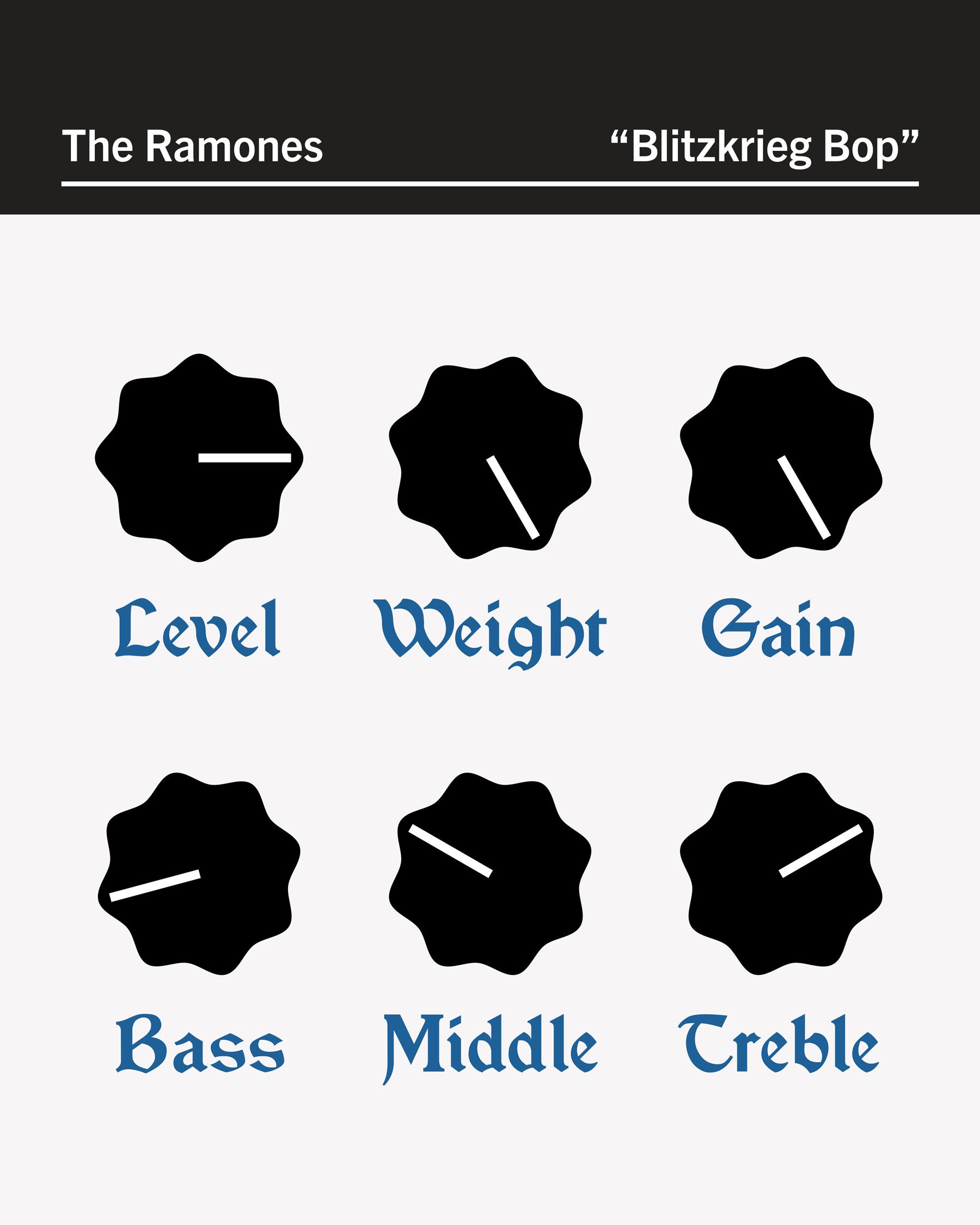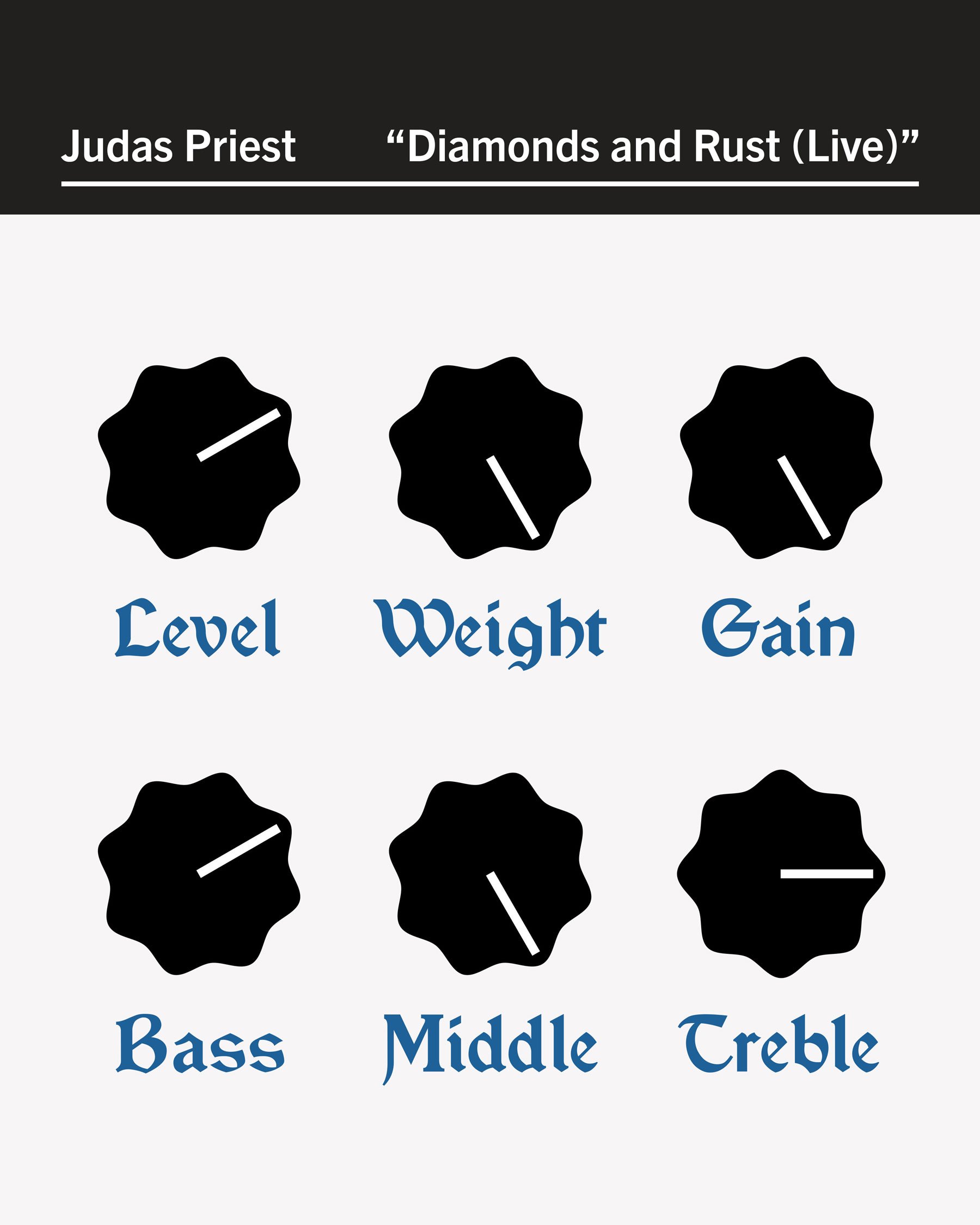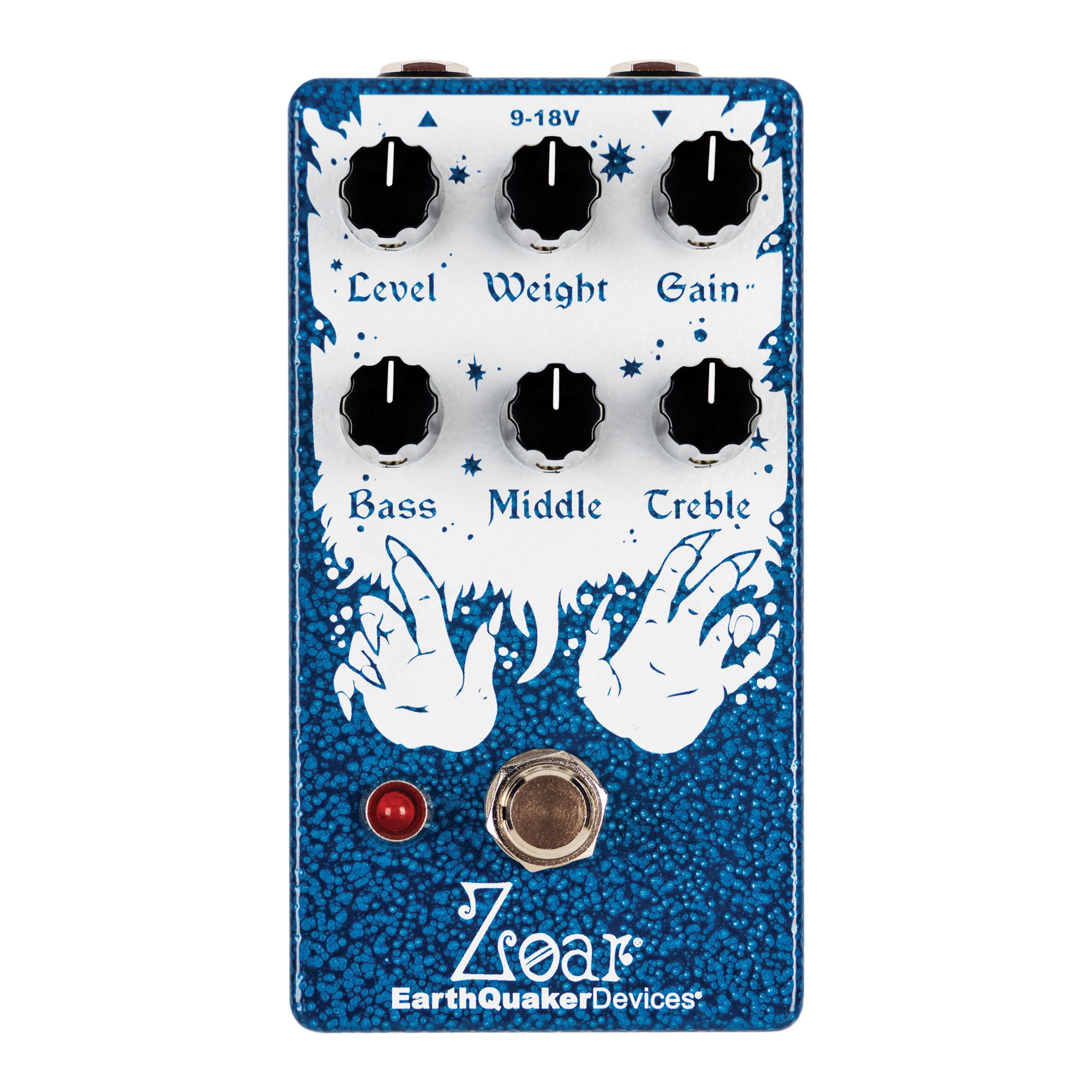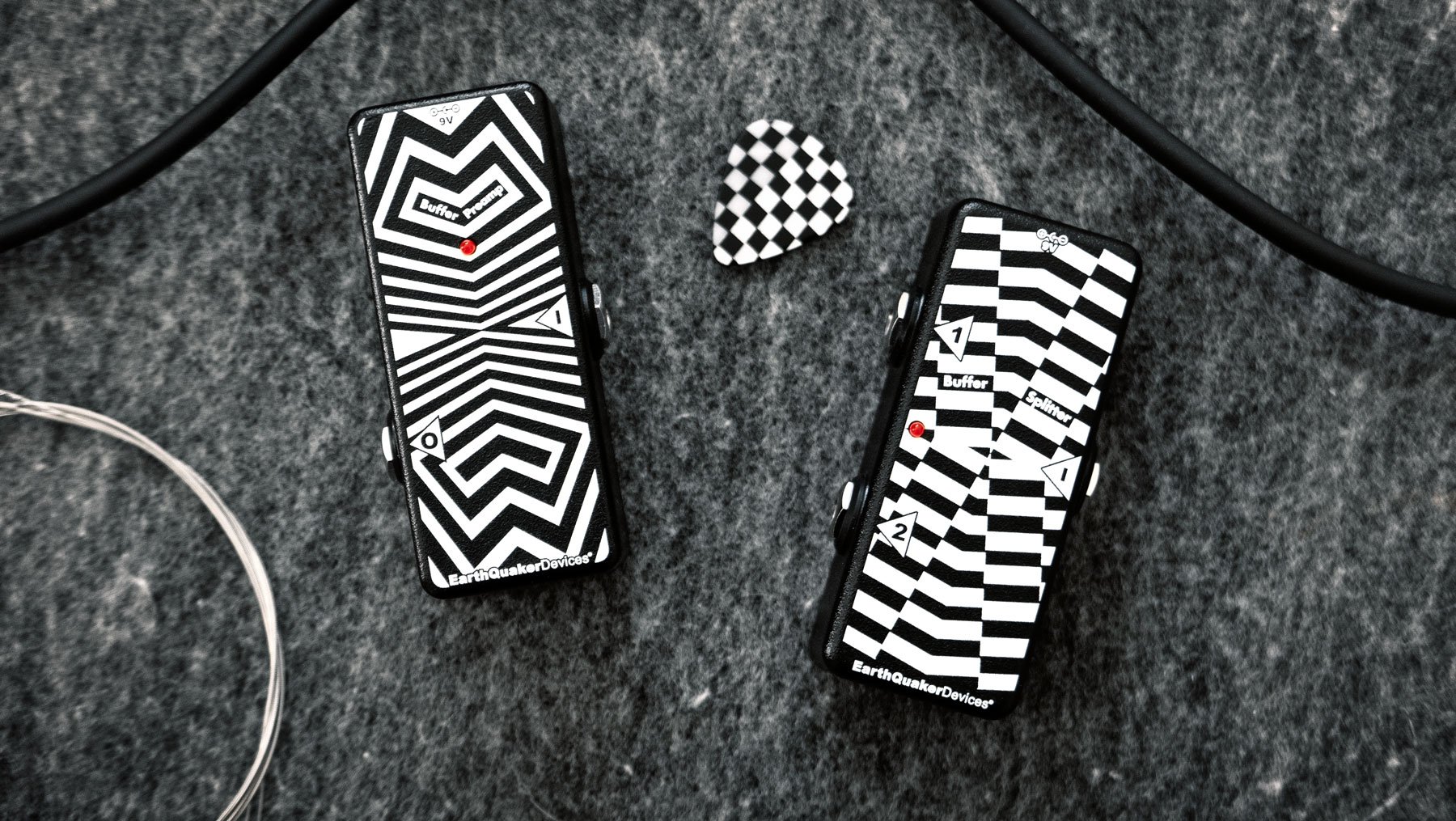Six Songs You Can Use Zoar to Emulate
Dan Epstein
Back in the days before I ever picked up an electric guitar, the biggest misconception I had about the instrument was that distortion was something created by a player’s skill, as opposed to dirt pedals or overdriven amps. “Oh man, those guys must be really good,” I marveled, listening to Glenn Tipton and K.K. Downing’s chainsaw chug on the Unleashed in the East version of “Diamonds and Rust”. And Judas Priest’s guitarists were really good — I just didn’t realize at the time that you didn’t necessarily have to have a talented pair of hands to achieve a killer-sounding crunch.
But once I started playing and realized where distortion actually came from, I bought my first pedal — a DOD FX55 — and never looked back. Even in band situations where I’ve opted for a “lean and mean” pedalboard approach, I’ve always kept one fuzz or distortion box handy, because it’s always nice to have the option of adding a little (or a lot of) extra hair to my chords and solos.
I’ve learned over time, however, that using distortion actually does require some skill — at least in terms of dialing in tones that work well with your playing style, as well as with the music you’re making, with the sonics produced by the rest of your band, etc. I’ve seen some guitarists thoroughly drown themselves (and their bandmates) in distortion, which sometimes works well but sometimes just sounds like a soggy mess. Likewise, I’ve known some players who are totally fixated upon using some tasty-sounding vintage fuzz or another, but whose ripping fuzz licks get completely lost in the mix as soon as the rest of the band kicks in.
Which is why I love EarthQuaker Devices’ new Zoar so much. A transistor-powered medium-high gain discrete distortion pedal (or, if you prefer, “Dynamic Audio Grinder”), Zoar is not only loud as hell — and even more so when you’re powering it at 18v — but it’s also quite possibly the most versatile dirt box I’ve ever had the pleasure of playing through. The passive 3-band EQ allows you to dial in all kinds of cool flavors and textures; combined with the Weight and Gain controls, this passive EQ can take you from teetering on the edge of amp breakup to plunging deep into some serious earth-churning heaviness. Whether you’re painstakingly sculpting your own signature sound, or just looking to emulate any number of crunchy guitar tones from your favorite rock, punk, metal, garage, psych, jangle pop, funk and even country records, Zoar will send your guitar soaring in whatever direction you want to go.
Like a lot of EQD pedals, Zoar sounds pretty great when you first plug into it … but it’s well worth taking some time to really familiarize yourself with how it works. The pedal’s six controls are highly interactive and extremely touch-sensitive; even just a slight tweak to any of the three passive EQ bands can affect the other two, as well as affect how they all sound in conjunction with the Level, Weight and Gain controls. Also, pay special attention to the Weight control, which dictates the amount of low end that passes through the circuit, and thus can radically alter the character of your distortion — especially when you have the Gain cranked anywhere past noon.
Once you really get the hang of what Zoar can do for your guitar sound, the pedal can become incredibly addictive. While exploring its wide spectrum of distortions and tones for this blog post, I kept finding myself thinking, “I wonder if I can get that sound out of it?” and running back to plug into it again. How Zoar interacts with your amp and guitar settings — as well as other effects — is a whole other ball of wax as well, so I kept the parameters of my sonic search relatively simple: I ran Zoar straight into a clean tube amp without any other effects, while keeping the volume and tone knobs on my guitars turned all the way up. What followed was a veritable smorgasbord of six-string awesomeness…
Davie Allan & The Arrows — Blue’s Theme
This fuzz-tastic theme from The Wild Angels, a 1966 biker flick starring Peter Fonda and Nancy Sinatra, remains one of my all-time favorite guitar instrumentals, and is usually the first thing I’ll try to play whenever I plug into a new fuzz pedal. Allan — one of the most underrated guitarists of the original fuzz era — got his hairy tones from a Mosrite Fuzzrite, but I was able to coax something remarkably similar from Zoar by setting the Level and Weight at 3 o’clock, the Gain cranked up to 5 o’clock, the Bass and Middle EQ at 10 o’clock, and the Treble pushed all the way to 5. I played the nasty opening lick on my SG’s bridge humbucker, then switched to the neck humbucker for the main riff … and suddenly, all I could think about was being free to ride my bike without getting hassled by THE MAN.
Creedence Clearwater Revival — Commotion
In addition to writing some of the greatest and most enduring rock songs of the late 1960s and early ‘70s, John Fogerty was a whiz at getting killer guitar tones. “Commotion,” the B-side of CCR’s 1969 hit “Green River,” features some of my favorite Fogerty lead licks; while he most likely recorded the song using either a Gibson Les Paul or a humbucker-equipped Rickenbacker 325 through a Kustom 200 amp, I was able to cop “Commotion”’s raspy, biting tone using the single-coil bridge pickup of my Telecaster and the following Zoar settings: Level at 2 o’clock, Weight at noon, Gain at 2 o’clock, Bass at noon, Middle at 10 o’clock, and Treble cranked all the way to 5. I also dropped my lower E string down to D in order to play the song correctly — and in the process discovered that Zoar plays really nicely with down-tuned guitars, as the drop-D tuning produced some really rich (but not at all overwhelming) overtones at this pedal setting that I wasn’t expecting.
The Rolling Stones — Happy
Speaking of alternate tunings, I then tried tuning my Tele to Open G to see if I could emulate Keith Richards’ sound from “Happy,” a highlight from the Stones’ 1972 classic Exile On Main St., and (for many folks) the quintessential Keith tune. And sure enough, Zoar delivered — I kept the Level at 2 o’clock, dialed the Treble back a bit to 4, and set the Weight, Gain, Bass and Middle all at noon, which produced a tight, ringing tone with just the right amount of dissolute attitude and defiant crunch. Not surprisingly, this setting also worked a treat for other Exile tracks like “Rocks Off” and “Soul Survivor”.
The Ramones — Blitzkrieg Bop
After getting my rocks off playing punchy, Keith-esque upstrokes, I wanted to see how Zoar would respond to some jackhammer downstrokes. Johnny Ramone recorded his guitar parts on the Ramones’ landmark 1976 debut album using a single coil-equipped Mosrite through a Marshall amp, so it didn’t seem like too much of a stretch to try and achieve a similar three-chord roar using the pedal and my Telecaster. And it wasn’t — at least once I figured out that emulating Johnny’s massive early sound actually required some judicious taming of the bass and middle frequencies. I set the Level at 3 o’clock, cranked both the Weight and the Gain to 5 o’clock, dialed the Bass down to about 8:30 and the Middle down to 10 o’clock, and the Treble to 2 o’clock, and I was immediately all revved up and ready to go!
AC/DC — If You Want Blood (You’ve Got It)
The argument over which Bon Scott-era AC/DC album is the best will never be settled, but my personal favorite is 1979’s Highway to Hell, both because it was the first album that I ever heard by the legendary Australian hard rockers, and because it’s such a stone cold classic from beginning to end. (Okay, maybe “Get It Hot” isn’t so hot, but it’s only two and a half minutes long, and anyway I digress…) The record also contains several of my all-time top AC/DC tracks, including “If You Want Blood,” which never fails to get my own blood pumping thanks to Malcolm Young’s slashing intro riff. Emulating Malcolm’s (or brother Angus’s) guitar crunch is somewhat counter-intuitive — it feels like it should be heavily distorted, yet that classic AC/DC sound is really more about texture, tone and attitude than actual distortion. Set Zoar’s Level to 2 o’clock, dial the Weight down to 9 o’clock for a crisper, more cutting sound, set the Gain at about 1:30, put the Bass at 2 o’clock, the Middle all the way up to 5, and the Treble at 3. Now play the song’s main riff on a bridge humbucker … and if you want AC/DC, you’ve got it!
Judas Priest — Diamonds and Rust (Live)
Thinking back on my earlier misconceptions about guitar distortion, I just had to see if I could use Zoar to get that thickly distorted sound I first heard all those years ago on Judas Priest’s classic 1979 live album Unleashed in the East. Zoar can clearly dial in all manner of big rock flavors, but can it hold its own when it comes to classic metal? I’m pleased to report it can, though my upstairs neighbor may be less than pleased by this news. In fact, it’s really simple to go from AC/DC crunch to Judas Priest chug with Zoar; just keep four of the settings exactly the same as above (Level at 2, Bass at 2, Middle at 5, Treble at 3), crank both the Weight and the Gain up all the way to 5, and play “Diamonds and Rust” on a bridge humbucker. Sure, some reverb, phasing and delay are needed to really nail Glenn Tipton’s tone — but even without it, you’re more than ready for a hellbent-for-leather rip through the greatest heavy metal version of a love song to Bob Dylan ever made.
Dan Epstein is an author, editor, journalist and guitarist based in New York's Hudson Valley. He writes about his latest musical obsessions at Jagged Time Lapse, and songs from his latest musical project The Corinthian Columns can be found at corinthiancolumns.bandcamp.com












